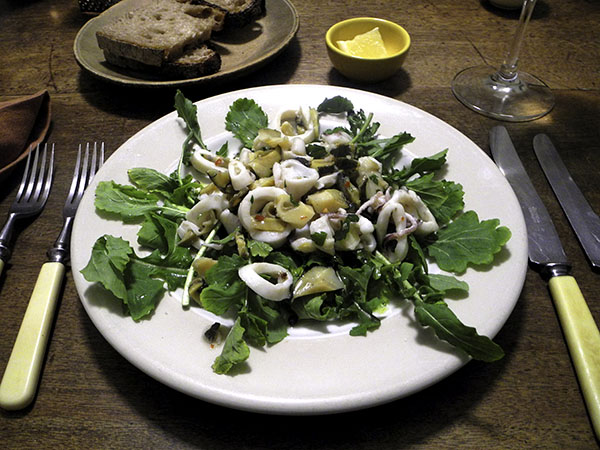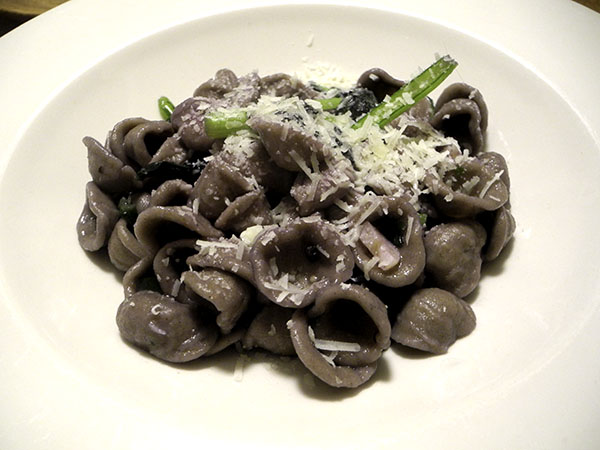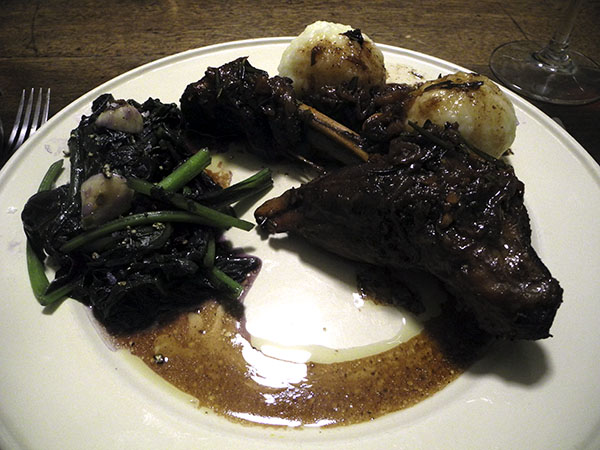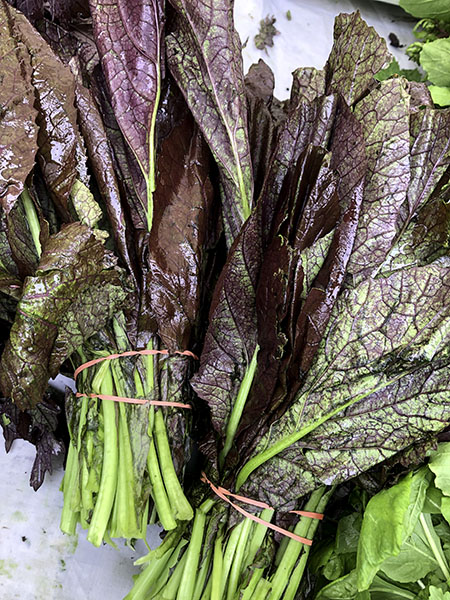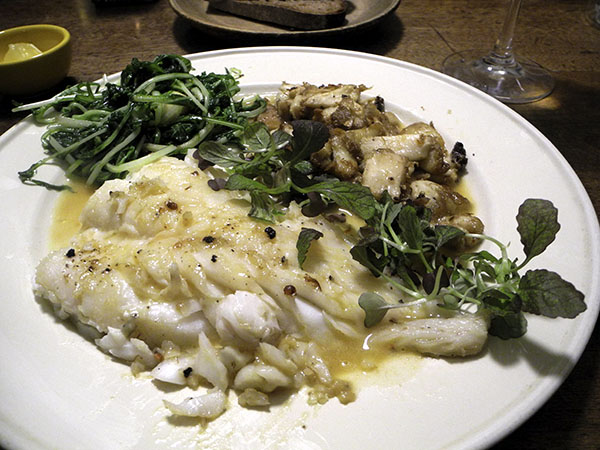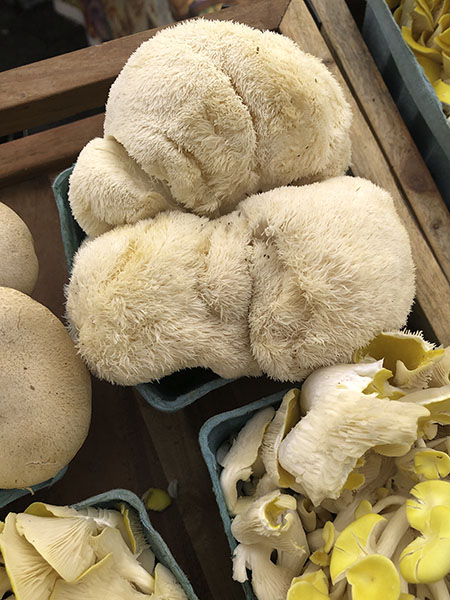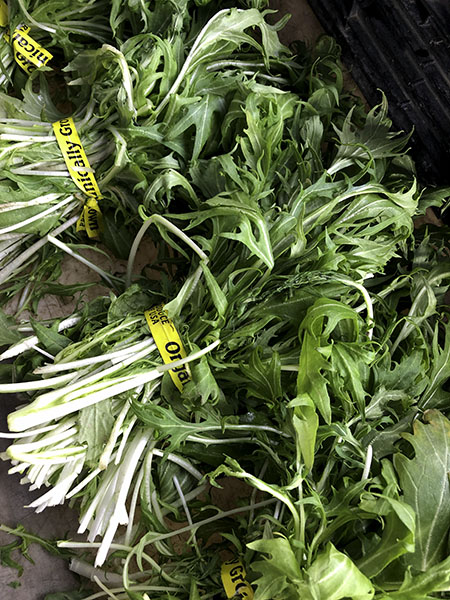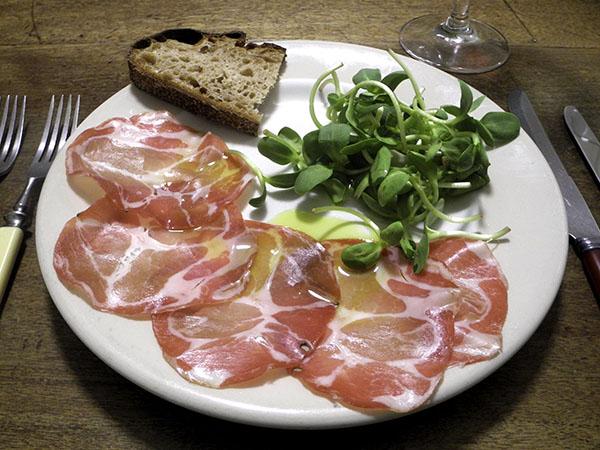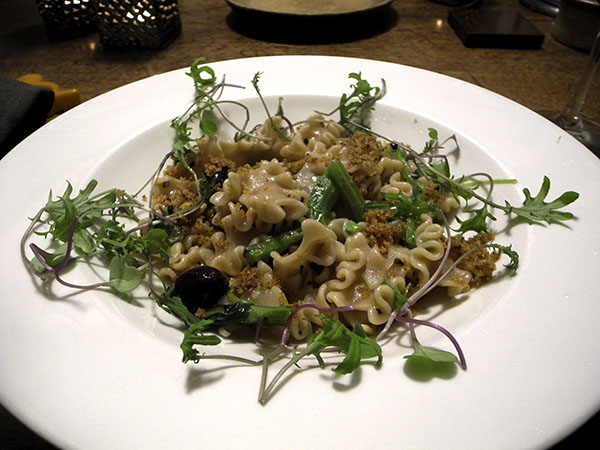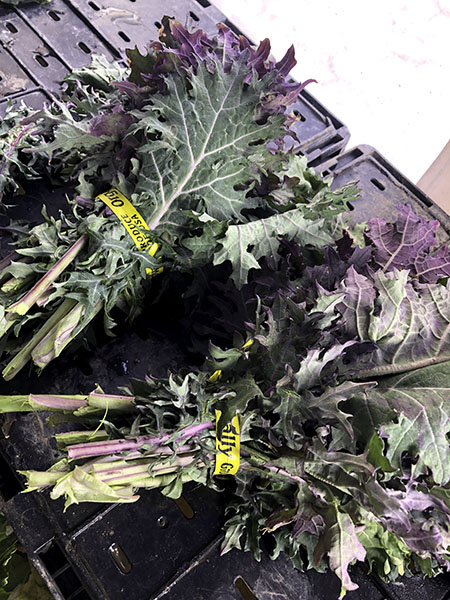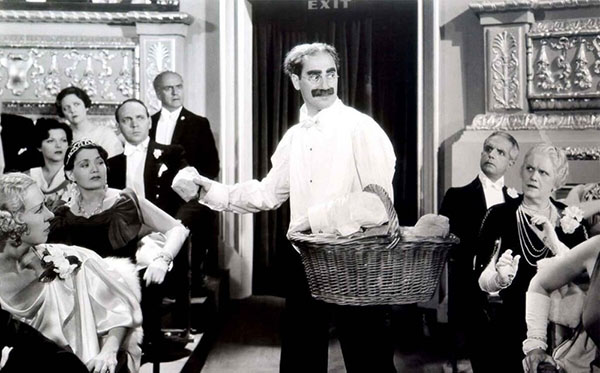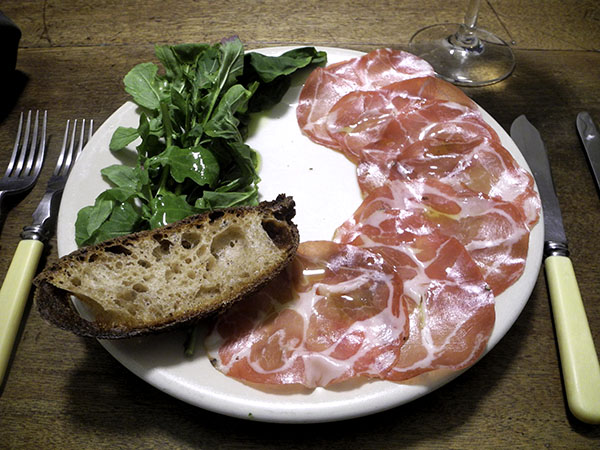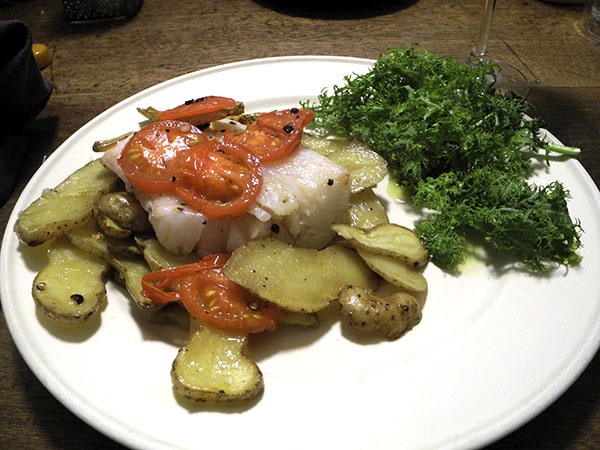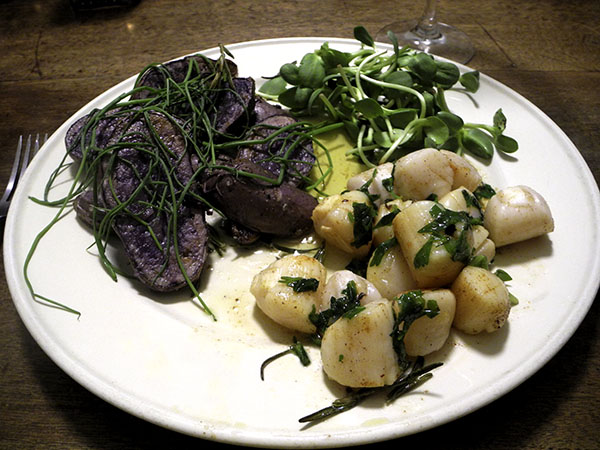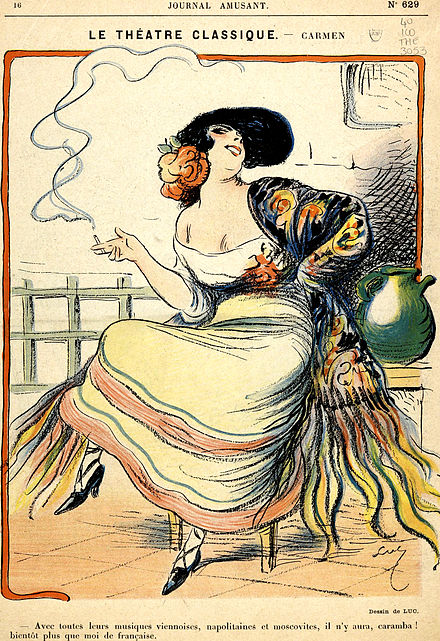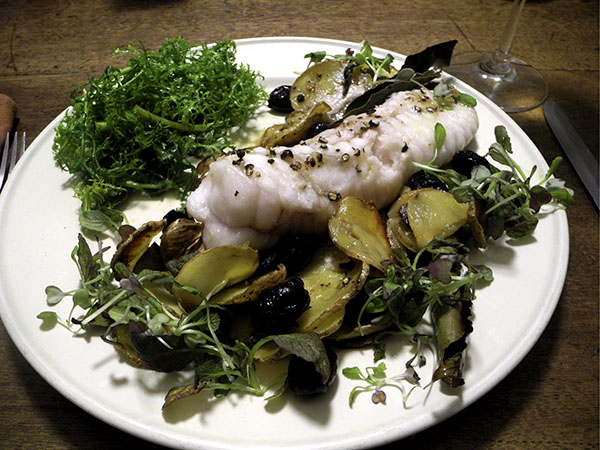
This is a pretty familiar entrée for us, but we never get tired of it.
The greens were a little novel, but they made for a side dish almost as plain as one could be. Although I’ve served it even more simply, not introducing it to any heat, I thought that this time it would be better to move it, however briefly, into a warm pan.
- twelve or 14 ounces of scrubbed, dried, and thinly sliced Natasha potatoes from Phillips Farms, arranged, overlapping, on the bottom of a glazed earthenware oven pan covered with 3 tablespoons, or slightly more, of a good Trader Joe’s Italian Reserve extra virgin olive oil, seasoned with sea salt, freshly-ground black pepper, a pinch of an Eckerton Hill Farm crushed dried hickory smoked Jamaican Scotch bonnet pepper, and 10 fresh whole get Italian bay leaves from Buon Italia scattered on top, and then more oil (another 2 tablespoons or so) poured on top, the pan placed inside a 400º oven for about 20 minutes, turning it back to front halfway through, by which time the potatoes should have begun to brown, then two thirds of a cup of pitted Sicilian black oil-cured olives from Buon Italia [fewer olives would definitely not impoverish the flavors of the entrée, and I think I’ll try for that the next time) were scattered about them, and 2 monkfish tails (17 ounces) from P.E. & D.D. Seafood placed on top of everything, the fish sprinkled with salt and pepper and the pan returned to the oven for another 10 or 12 minutes more, or until the monkfish was tender but not overcooked, arranged on the plates garnished with a little micro red Russian kale from Windfall Farms
- a handful of very beautiful and absolutely delicious ‘frizzy mustard’ greens from Norwich Meadows Farm, only barely heated in a little olive oil in which 2 halved cloves of ‘music garlic’ from Windfall Farms had been allowed to sweat a bit, seasoned with salt and pepper and finished on the plates with a drizzle of olive oil
- the wine was a Portuguese (Beira) white, Quinta do Cardo White ‘Companhia das Quintas’ 2016, from Astor Wines
There was a cheese course
- three cheeses, Secret de Compostelle (French Basque), a sheep milk cheese from Schaller & Weber; a French goat milk log (otherwise unidentified), also from Schaller & Weber; and a semi-firm Riverine Ranch water buffalo ‘farm stand cheese’
- a wonderful country miche from She Wolf Bakery
- the wine with the cheese was a New York (Hudson River/Pine Bush) white, Wild Arc Farm Chardonnay (2017), from Todd Cavallo and Crystal Cornish’s beautiful small, biodynamic, permaculture-focused Wild Arc Farm, in Pine Bush, New York, located below the Shawangunk Mountains.
- the music throughout was the third act of Wagner’s ‘Parsifal’, the 1962 live Bayreuth Festival House performance, in which Hans Knappertsbusch conducts the Bayreuth Festival Orchestra and the Bayreuth Festival Chorus, with soloists Hans Hotter, Jess Thomas, Gustav Neidlinger, Irene Dalis, Niels Moller, Gerd Nienstedt, Sona Cervena, Ursula Boese, Gerhard Stolze, Georg Paskuda, Gundula Janowitz, Anja Silja, Elsa-Margrete Gardelli , Martti Talvela, George London, Rita Bartos, and Dorothea Siebert
